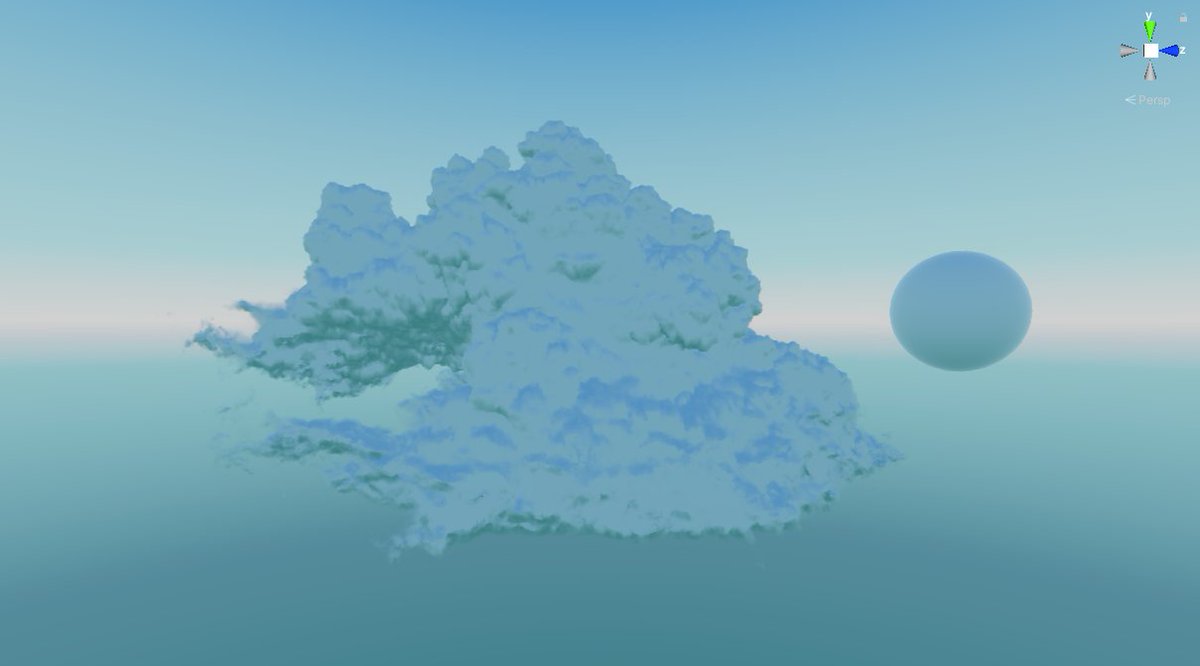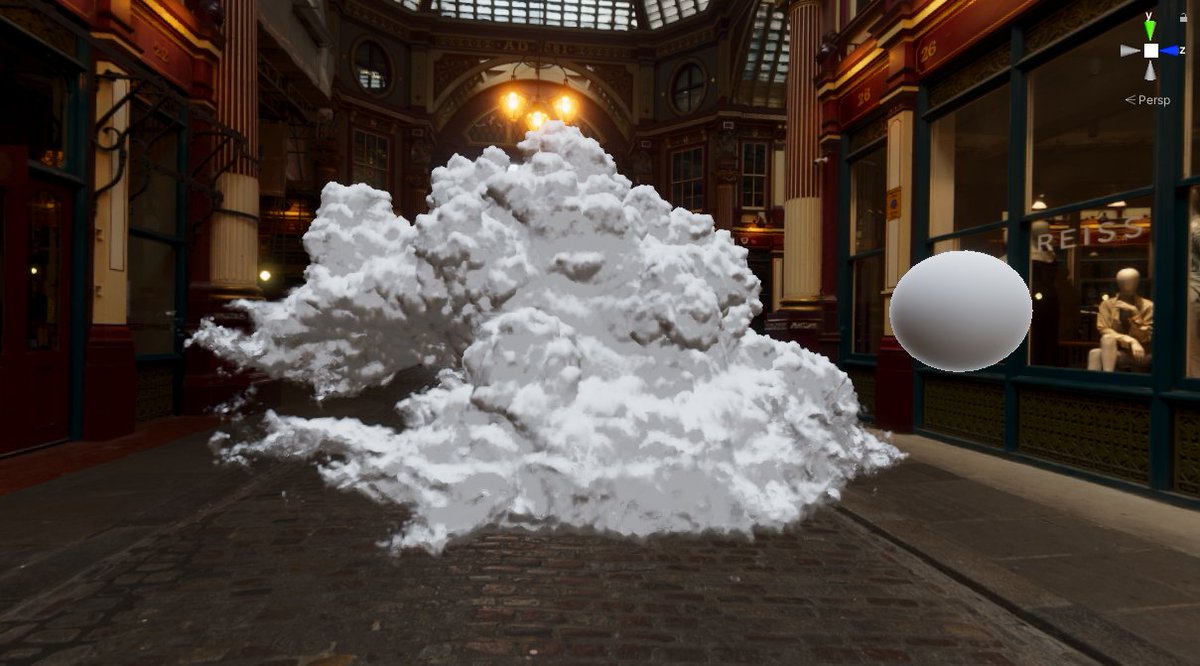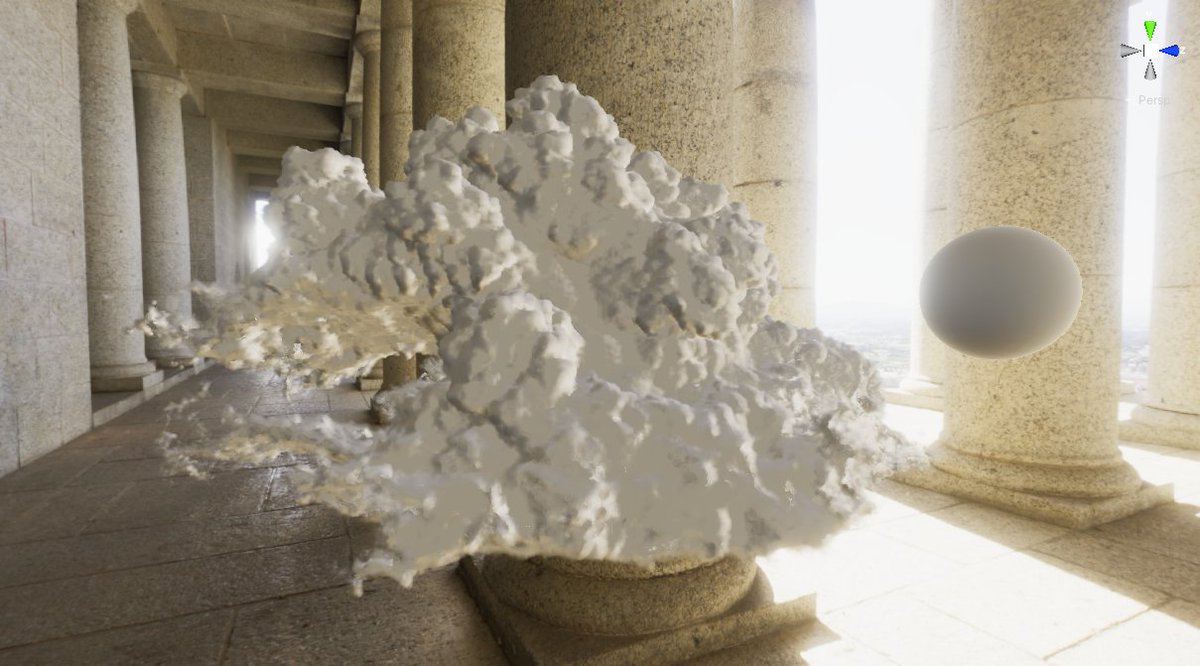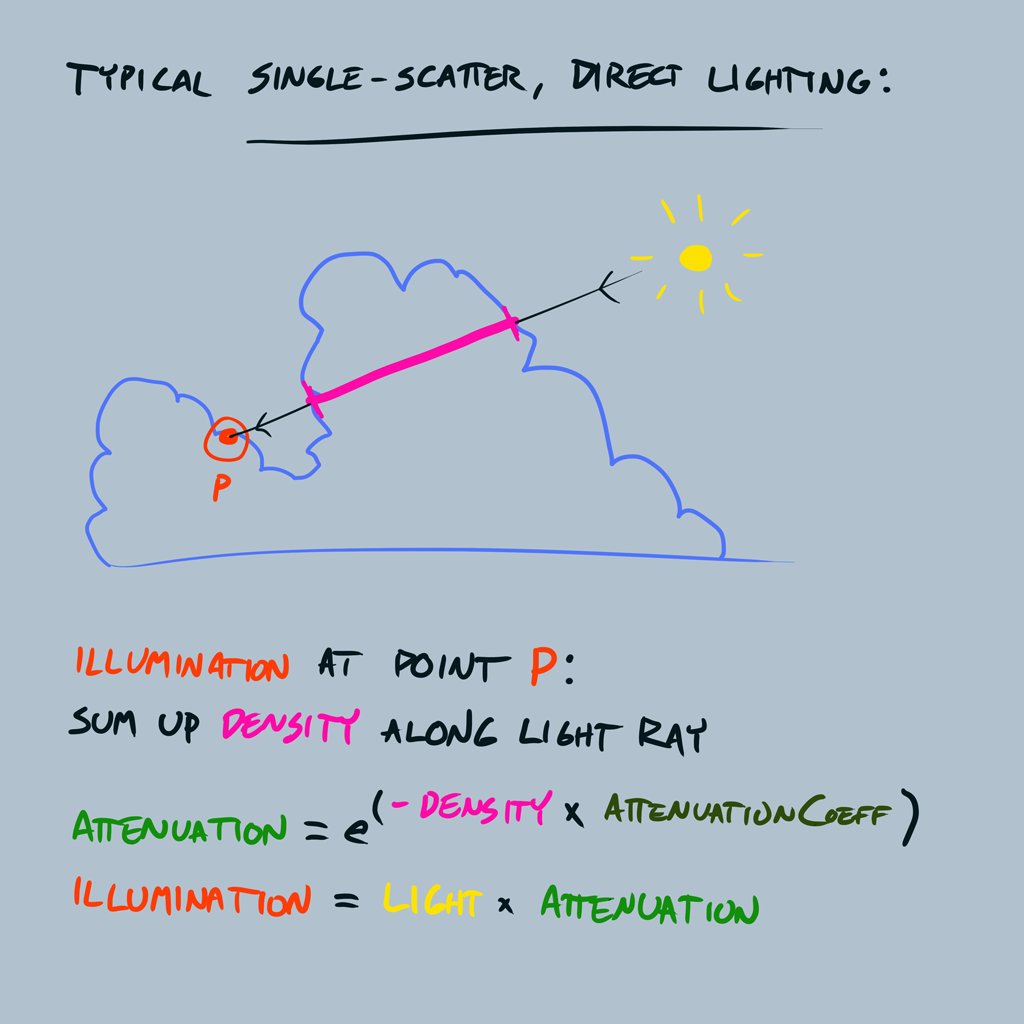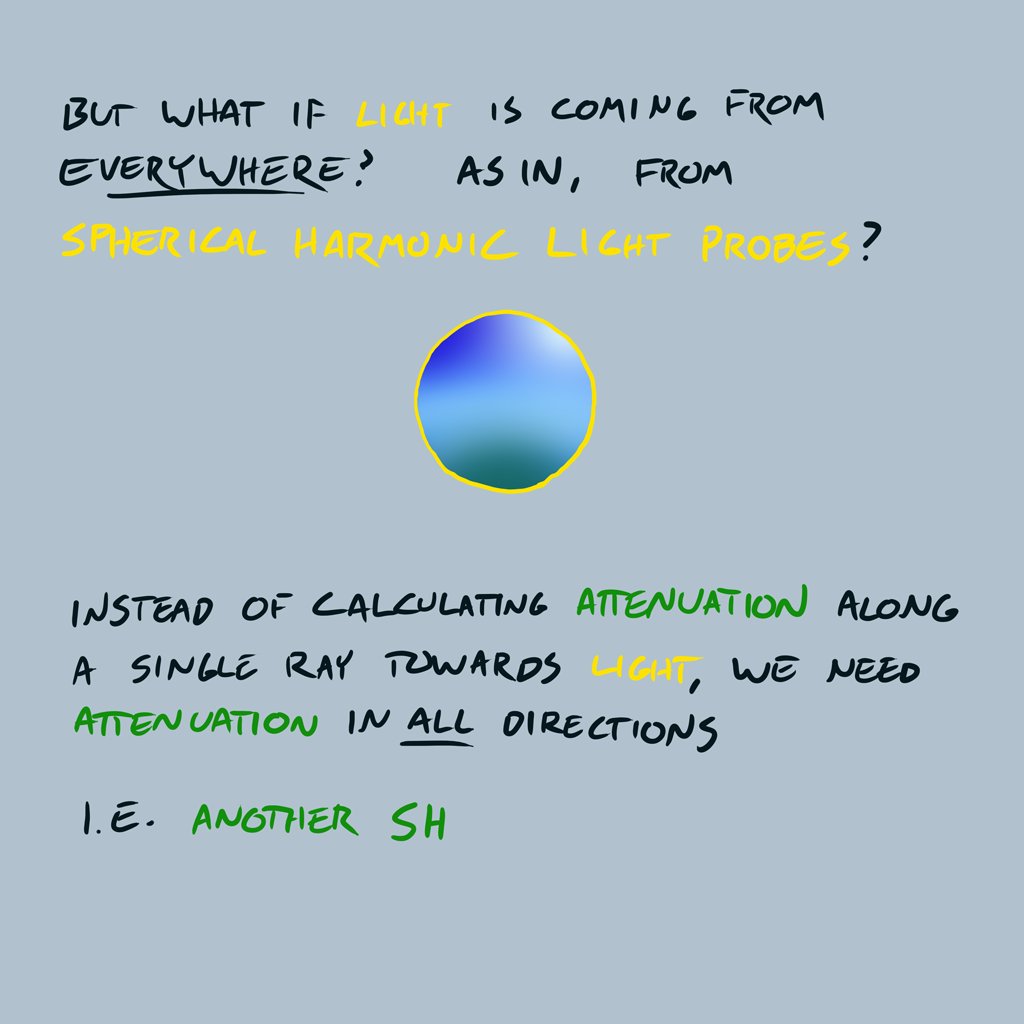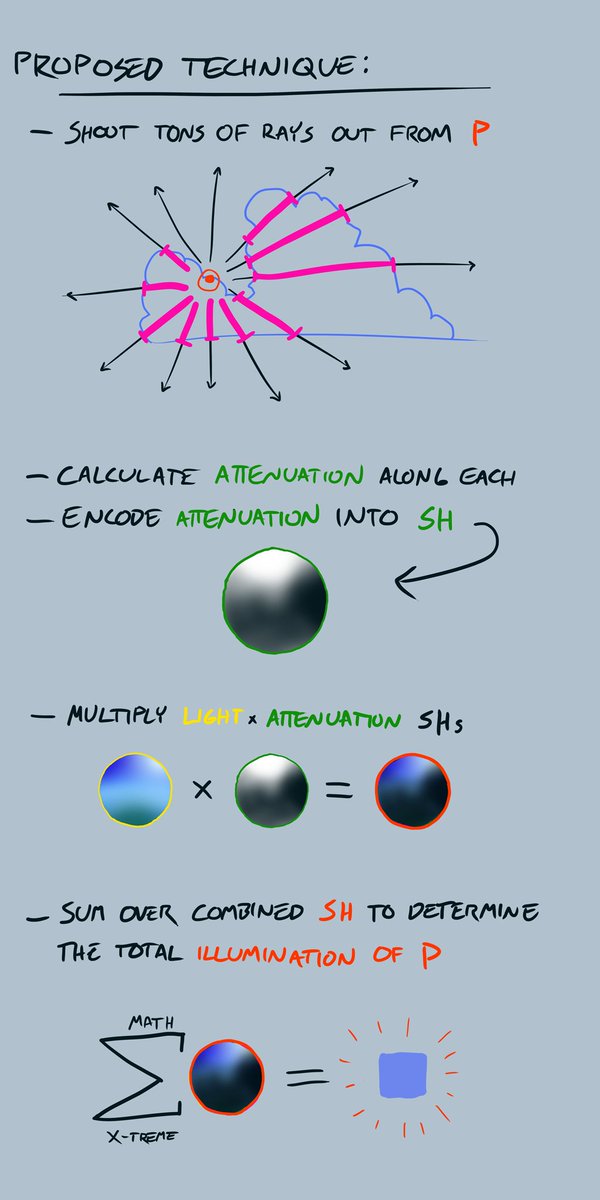Gonna describe a possible rendering technique because I need to get it out of my head but it'd be way too much work to actually implement lmao
This looks... cool, but weird
The problem is straightforward: Just using the gradient to look up an SH value has nothing to do with scattering. This is essentially lighting the cloud like a weird low-opacity reflector, which is nonsensical
IRL clouds don't really REFLECT much light at all, they mainly transmit/scatter
(distinction between reflection and backscatter is like A Whole Deal)
The SH lookup is telling us how much light is coming from the environment, but what we need to know is how much of that light REACHES the sample
we need some kind of directional attenuation term to modulate the incoming environment light
(to be clear: I'm only concerned with attenuation here, not multiple scattering. This is Wrong ofc but if I try to handle inscatter/backscatter/etc this'll get way out of hand immediately. Need a decent single-scattering approximation first before tackling the rest)
"directional attenuation term" sure sounds like... another SH
So for every voxel (or sample, or however you're doing your volumes) you could sample all around its neighborhood and build an SH that describes how much light can reach it from every direction
So then you'd use the attenuation SH to modulate your environment-lighting SH and the end result SHOULD look fantastic
...This is where it gets into the "too much of a pain to actually write" bc my knowledge of SH math is really vague lol
plus having to store all the SH coefficients means storing way more data per-voxel, and I'm not sure I want that requirement on my volume system at this point
also I'm just using unity's lighting functions to sample the lightprobe SHs that unity generates; I've never actually gone through the math of encoding arbitrary functions into harmonics and then sampling them
not super hard to learn but like... not what I want to do tonight lol
One thing I'm curious about though:
I'd be trying to use one SH to modulate another SH
How do you... do that? Like you're not sampling along a direction anymore, what you'd want is the sum of the whole lightprobe SH weighted by the directional attenuation SH
Can you just like... multiply SH coefficients? Does that modulate the result, or is it like Fourier space where multiplication becomes convolution and you need new rules for new space? I know stuff like rotating them is nontrivial...
I did find this page, which at least proves I'm def not the first person to think of this:
They're only describing building the "visibility transfer function" though, not going into detail on how you'd actually use that to modulate incoming light

http://cumulunimbus.se/older-stuff/volume-rendering-with-spherical-harmonics/
Volume rendering with Spherical Harmonics
Notably the "march opacity but use the local gradient for shading" technique is useless for clouds but actually great for visualizing CT scans. In that case you actually WANT to see opaque reflective surfaces that are still, paradoxically, semitransparent
